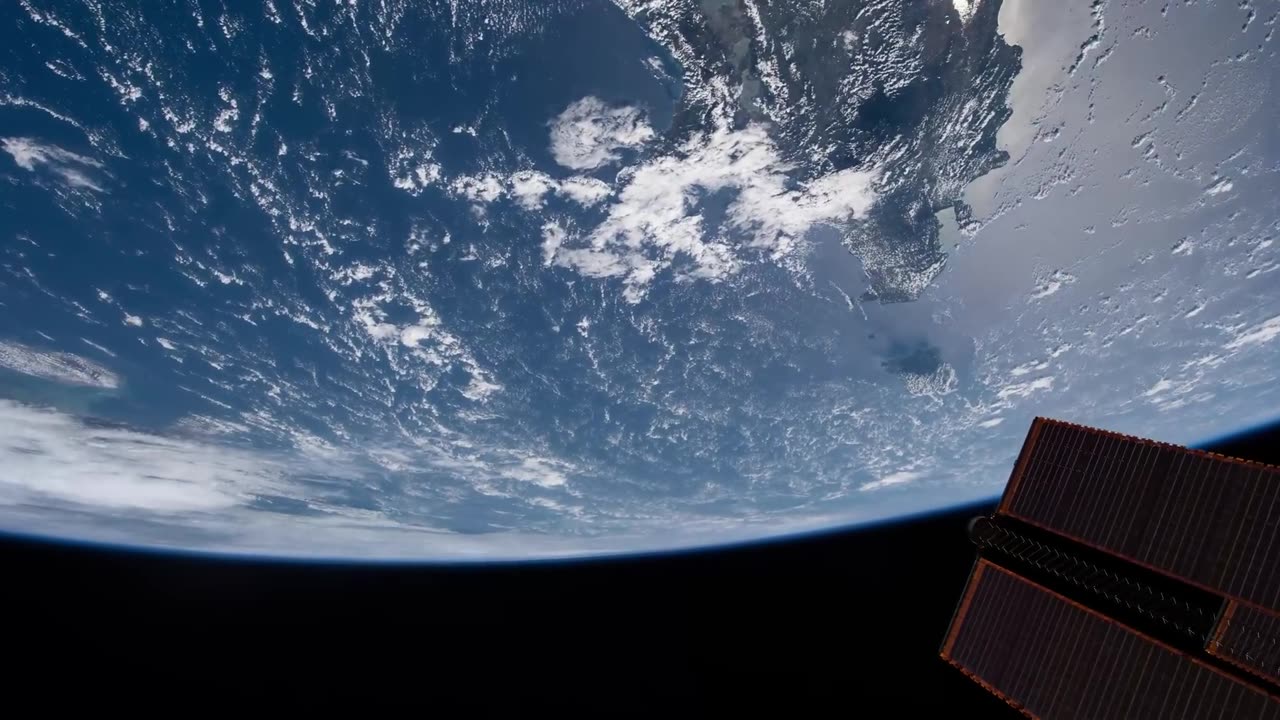Premium Only Content

Earth at 4k
Earth is the third planet from the Sun in our solar system and is the only known planet to support life. It's a diverse and complex world that has been home to a wide range of organisms, including humans. Here's a description of Earth:
**Physical Characteristics:**
Earth is a rocky planet with a solid surface, primarily composed of minerals and rock formations. Its surface is covered by landmasses and oceans. The planet has an average diameter of about 12,742 kilometers (7,918 miles) and a circumference of approximately 40,075 kilometers (24,901 miles).
**Atmosphere and Climate:**
Earth is enveloped by a thin layer of gases known as the atmosphere. This atmosphere is composed primarily of nitrogen (about 78%) and oxygen (about 21%), along with trace amounts of other gases like carbon dioxide, water vapor, and noble gases. The atmosphere plays a crucial role in regulating temperature, weather patterns, and supporting life. It absorbs and traps heat from the Sun, creating a relatively stable climate that's conducive to various forms of life.
**Hydrosphere:**
Water is a defining feature of Earth. Approximately 71% of the planet's surface is covered by water in the form of oceans, seas, lakes, rivers, and glaciers. This interconnected system of water bodies is called the hydrosphere. Water is essential for supporting life, regulating temperature, and shaping Earth's landscapes through erosion and deposition.
**Biosphere:**
Earth's biosphere is the realm of life. It includes all living organisms, from microscopic bacteria to towering trees and complex animals like humans. Life on Earth is incredibly diverse and has evolved over billions of years. The biosphere interacts with the other spheres—such as the atmosphere, hydrosphere, and lithosphere—forming complex ecosystems that sustain and depend on one another.
**Geology and Landforms:**
The solid outer layer of Earth, known as the lithosphere, is divided into tectonic plates that constantly shift and interact. This movement has given rise to various landforms such as mountains, valleys, plains, deserts, and oceans. Earth's geology is shaped by processes like volcanism, earthquakes, erosion, and sedimentation.
**Moon:**
Earth has one natural satellite, the Moon, which orbits the planet. The Moon's gravitational influence affects Earth's tides and has played a role in cultural and scientific aspects of human history.
**Human Impact:**
In recent centuries, human activities have significantly impacted Earth's environment. Industrialization, deforestation, pollution, and greenhouse gas emissions have led to changes in the climate, loss of biodiversity, and altered landscapes. Understanding and mitigating these impacts are crucial for the well-being of both the planet and its inhabitants.
Earth is a remarkable and intricate system that has provided a habitat for a wide array of life forms, shaped by intricate interactions between its various components. It serves as a reminder of the delicate balance that exists in our universe and the importance of preserving and nurturing our home planet for future generations.
-
 2:06:05
2:06:05
"What Is Money?" Show
2 days agoTrump Family Bitcoin Bet Will Trigger Nation-State FOMO w/ Matt Prusak (CEO American Bitcoin)
13.4K -
 1:04:36
1:04:36
Dialogue works
3 days ago $4.50 earnedMohammad Marandi: Iran Just Gave Israel a FINAL Warning…
23.4K6 -
 9:20
9:20
daniellesmithab
1 day ago3 Bad Laws
23.3K8 -
 9:22
9:22
MattMorseTV
19 hours ago $11.63 earnedINDIA just made a BIG MISTAKE.
65.1K60 -
 12:11
12:11
Nikko Ortiz
18 hours agoCrashout 6 Rumble
17.5K3 -
 22:35
22:35
GritsGG
17 hours agoThe KILO is BACK! The Best AR on Warzone FRIES!
25.7K1 -
 2:16:36
2:16:36
Side Scrollers Podcast
21 hours agoStreamer KICKED OUT of Renaissance Fair for Misgendering + Spiderman MELTDOWN | Side Scrollers Live
47.4K8 -
 12:29
12:29
The Pascal Show
1 day ago $2.53 earnedLOCKED IN A DUNGEON?! Parents Arrested After 5 Children Found In 'Dungeon' At Home
18.7K3 -
 LIVE
LIVE
Lofi Girl
2 years agoSynthwave Radio 🌌 - beats to chill/game to
316 watching -
 3:07:24
3:07:24
FreshandFit
13 hours agoPrivileged Nigerian Thinks Women Created Everything: HEATED DEBATE
159K100